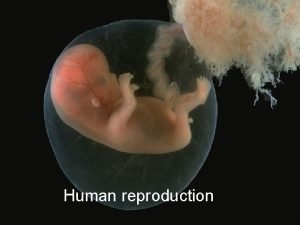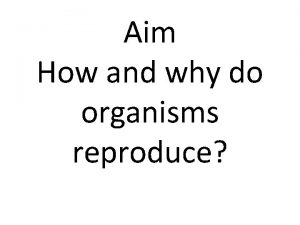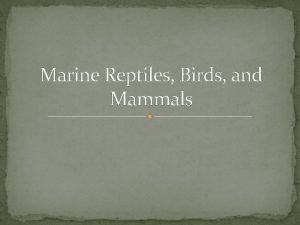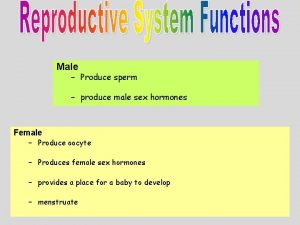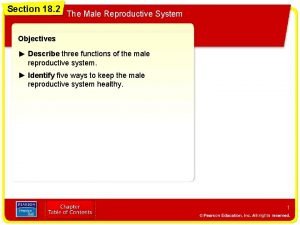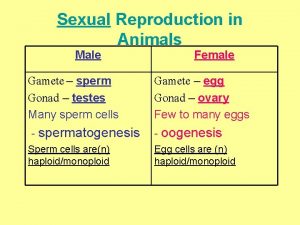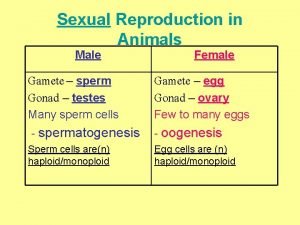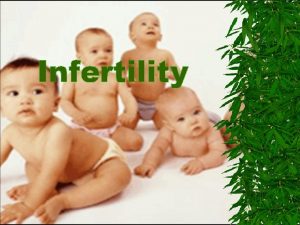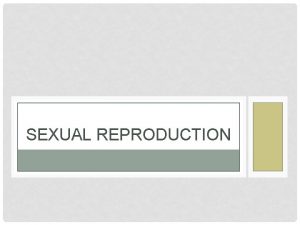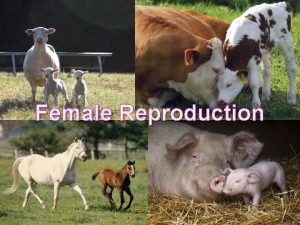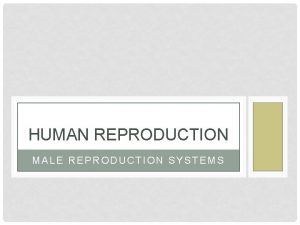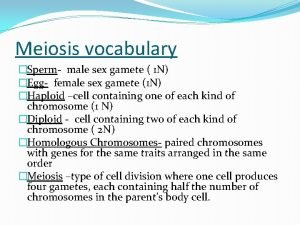Sexual Reproduction in Animals Male Female Gamete sperm










- Slides: 10

Sexual Reproduction in Animals Male Female Gamete – sperm Gonad – testes Many sperm cells Gamete – egg Gonad – ovary Few to many eggs - spermatogenesis - oogenesis Sperm cells are(n) haploid/monoploid Egg cells are (n) haploid/monoploid

Sperm *Smaller *Swims through liquid *Head, middle, & tail (flagellum) Egg *Larger than a body cell *Cannot move on its own *Round shape

Fertilization • Sperm nucleus enters the egg and moves to the egg nucleus. The 2 nuclei join together and then form a zygote.

External Fertilization *outside the body • Animals that breed in the water • Many hazards in the environment – Sperm and egg may not meet – Eggs or offspring may be eaten – May die due to environmental conditions • Temperature • Oxygen level

• Large number of sperm and egg are released to overcome hazards • Hormones control behavior to have sperm and egg released at the same time.

Internal Fertilization *within the female body • Land animals • Some aquatic animals – Shark – Octopus

• Requires specialized sex organ to carry sperm to body of female • Watery environment needed for sperm to swim to the egg

• After fertilization, zygote is enclosed in a protective shell and released OR remains and develops in female body Zygote Turtle laying eggs

• Internal Fertilization – Fewer eggs needed – Well protected – Increased chance of fertilization Parthenogenesis – development of unfertilized egg into an adult. - Bees & Wasps

This powerpoint was kindly donated to www. worldofteaching. com http: //www. worldofteaching. com Is home to well over a thousand powerpoints submitted by teachers. This a free site. Please visit and I hope it will help in your teaching
